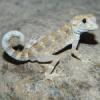Zachęcam do lektury:
1. 'Understanding reptile parasites' Roger J. Klingenberg, DVM
"There are numerous species of flagellates, and their pathogenity is questioned. The protozoa of the genera Leptomonas, Hexamastis, Hypotrichomoa, Trichomonas, Tetratrichomonas and Trichrichomonas found in snakes and lizards are commonly found in healthy reptiles, but these protozoa have also been linked to gastointestinal disease. (...) The effects on the body is variable. The author believes that small numbers of flagellates are normal intestinal flora."
2. 'Repitle medicine and surgery' Madera (gadzia biblia w wet.)
"Flagellated Protozoa
Location: gastrointestinal and urniary tracts
Clinical signs: usually asymptomatic commensal, may cause anorexia, weight loss
Pathology: usually nonpathogenic, probably requires concomitant primary disease/stressor to become pathogenic
Treatment: rarely required, metronidazole"
Rozumiem, iż zdania co do fizjologicznej flory przewodu pokarmowego gadów mogą być odmienne, ale myślę, że komentarze poddające pod wątpliwość kompetencje innych lekarzy są bynajmniej nie na miejscu.
Dawkowanie metronidazolu zostanie dokładnie dobrane przez weterynarza, do którego się Pani uda na odrobaczanie (w zależności od masy ciała i kondycji agamy oraz dostępnej w przychodni postaci leku).
![]()
ewelinas
Użytkownik od 07 lut 2012W tej chwili Niedostępny
Ostatnio aktywny mar 28 2020 10:06


 Znajdź zawartość
Znajdź zawartość Kobieta
Kobieta






